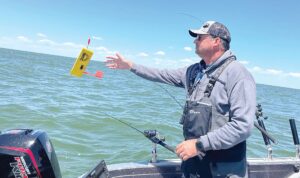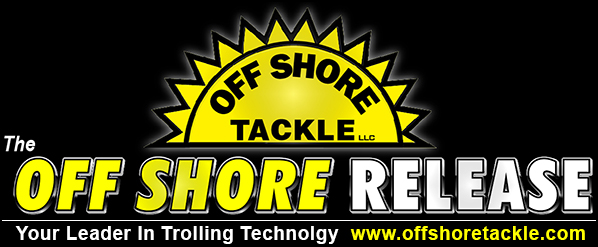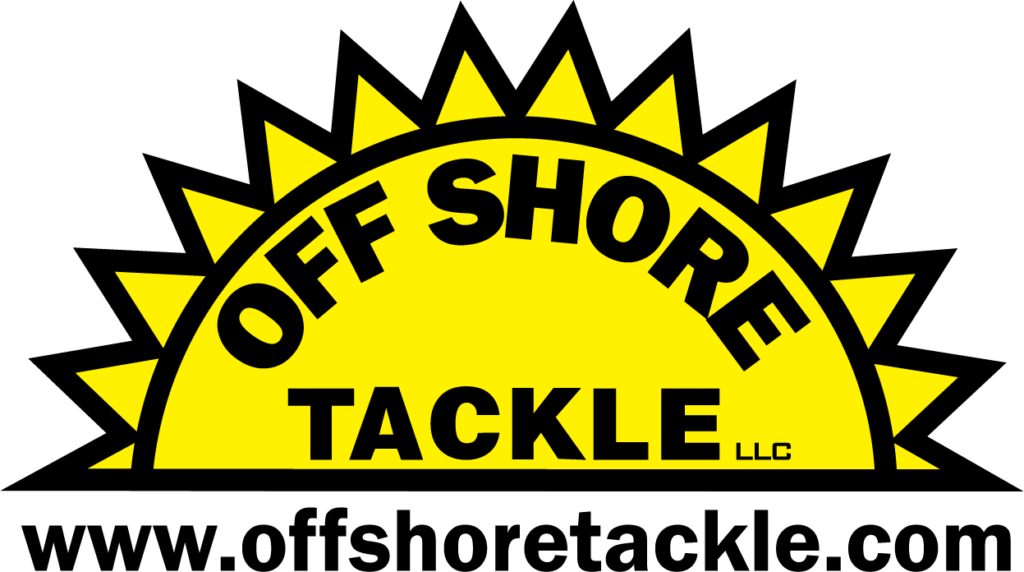BY ROB JONES

Over the years I’ve introduced a lot of friends to fishing with the Off Shore Tackle OR12 Side Planer. I set my boards up using an OR19 (orange) release on the bracket and an OR16 (red) Pro Clip at the tail of the board. I prefer this rigging method as it allows me to trip the board when a fish is hooked, yet still keep the board pegged in place on the line while fighting the fish. The catch is that to accomplish this goal the line has to be placed behind the pin protruding through the center of the OR16. If the line isn’t placed behind the pin, the board can pop off the line and simply float away!
The way to avoid chasing boards all day when fishing with new anglers is to take some time at the beginning of the day to show your fishing buddies exactly how to use the OR16. Pinch open the OR16 and be careful to place the line behind the plastic pin that is protruding through the rubber pads before closing the OR16. Hooked up correctly on the OR16 the board is not going to come off the line, your day will be spent fishing, having a good time and not chasing boards. It’s just that simple.
RIGGING DIVING PLANERS WITH THE OR16
Great Lakes waters have become clearer over the years. I’ve started fishing diving planers like the popular Dipsy Diver with much longer leaders than traditionally employed by rigging an OR16 Pro Clip to the release arm and also the swivel at the back of the diver. I use the split ring that comes standard with the OR16 to make these connections.
When setting up, I use a rod that has been rigged with a 25 to 50 foot length of fluorocarbon leader material that is double uni-knotted to a braid backing line. I let the lure I’m fishing out until the braid backing is at the rod tip. Now I’ll snap the trip arm closed on the diver and select the desired planing setting by rotating the counterbalance weight mounted to the back of the diver. The next step is to place the leader material near the braid backing behind the pin in the OR16 on both the front and back of the diver.
With the diver attached to the line in two places, thanks to the OR16 Pro Clips, I place the diver in the water and slowly play out line by engaging the bait clicker on my line counter reels and backing off on the drag tension of the reel so that line slowly clicks off the spool. When the desired lead length is reached, I tighten the drag on the reel back down enough that the diver doesn’t continue to pull out additional line.
When a fish strikes, a sharp snap of the rod tip will pop the trip arm mechanism open, stopping the diver from continuing to dive. Meanwhile leaving the diver pegged in place on the line makes it easy to fight the fish.
When the diver is close enough to the rod to reach, simply pinch open the two OR16 Pro Clips and remove the diver before fighting the fish to net. This simple rigging method is similar to using Snap Weights and makes it possible to create space between my lures and the diving planer. This diver rigging method works in all water conditions but is especially stealthy when fishing in clear water.
Once you’ve tried fishing a Dipsy rigged this way, you’ll never go back to attaching the leader to the back of the diver again.
USING THE OR30 TO HOLD THE NET BAG
When targeting big fish like muskie, the landing net also needs to be big. A landing net with a large bag can easily get snagged on rod holders, boat cleats and other items at the moment of truth. An easy way to avoid this problem is to use an OR30 Heavy Tension Line Release to hold the net bag tight against the net handle.
I rig this up by adding a split ring and oversized snap swivel to the OR30. The OR30 is then secured through the snap swivel to the net handle using a wire tie positioned on the net handle so when the bag is laid flat, the OR30 can easily be clipped lightly to the net mesh.
When netting a fish, the net bag stays up against the net handle until the weight of the fish hitting the bag pulls the net bag free and allows the fish to drop into the scoop. Slick.
For smaller fish like walleye, trout and salmon, the lighter tension OR17 can be used in a similar way.
SUMMING IT UP
Off Shore Tackle produces some of my favorite and most frequently used trolling products. You can’t beat Off Shore quality and innovation. Just another reason why Off Shore Tackle is “Your Leader in Trolling Technology”.
Editor’s Note: Rob Jones is an Off Shore Tackle pro staffer, based out of Ontario, Canada who fishes Off Shore Tackle products often and for a host of species.


